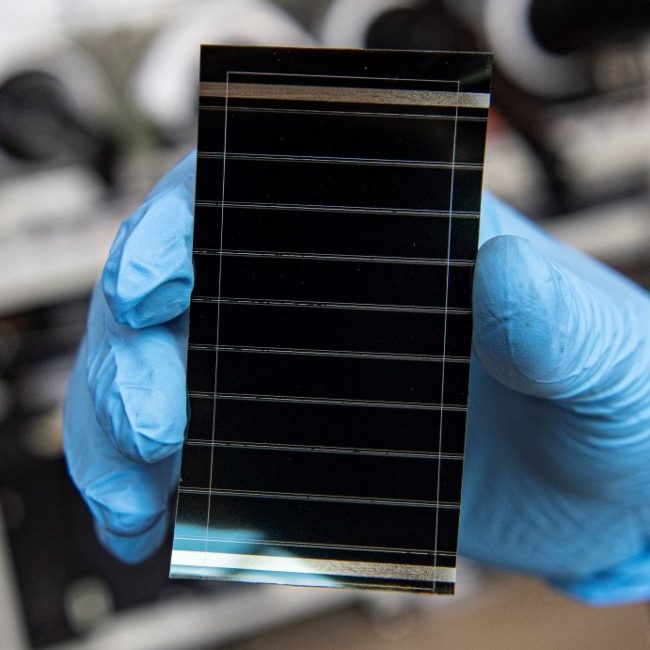"Solar Energy: Illuminating Tomorrow's World"
In an era marked by environmental concerns and a quest for sustainable energy sources, solar power has emerged as a shining beacon of hope for our planet’s future. The sun, a virtually infinite and clean source of energy, holds the key to meeting our ever-growing energy demands while minimizing our carbon footprint.
As technology continues to evolve and investments in renewable energy soar, the future of solar energy is poised to revolutionize the global energy landscape. In this blog, we will delve into the most promising advancements and innovations driving the solar revolution, explore its potential impact on various sectors, and discuss the challenges and opportunities on the path toward a sustainable solar-powered world.

Technological Innovations Propelling Solar Energy
Next-Generation Photovoltaics
Breakthroughs in photovoltaic technology have paved the way for more efficient solar cells, including perovskite, thin-film, and multi-junction cells. These advancements promise to improve solar panel efficiency, making solar power a more cost-effective and competitive energy option.

Perovskite solar cells
Perovskite solar cells have gained immense attention in recent years due to their potential to revolutionize the solar industry. Perovskite materials are a class of compounds with a specific crystal structure that allows them to efficiently convert sunlight into electricity. They are relatively easy and inexpensive to manufacture, making them a promising candidate for commercial solar cell production.
Researchers have made remarkable progress in improving perovskite solar cell efficiency, reaching conversion efficiencies close to those of traditional silicon-based solar cells. Their lightweight and flexibility also open up new possibilities for incorporating solar cells into various applications like building-integrated photovoltaics (BIPV) and wearable devices.

Thin-film solar cells
Thin-film solar cells are another important advancement in photovoltaic technology. Unlike traditional crystalline silicon cells, thin-film solar cells use very thin layers of light-absorbing materials, which reduces material costs and makes the manufacturing process more efficient.
Thin-film solar cells can be deposited on flexible substrates, allowing for their integration into unconventional surfaces such as curved structures, windows, and even clothing. While their conversion efficiencies are generally lower than silicon-based cells, their potential for low-cost and large-scale production makes them a competitive option, especially in regions with abundant sunlight.
Multi-Junction Solar Cells
Multi-junction solar cells are designed to capture a broader range of the solar spectrum by using multiple layers of different materials that absorb different wavelengths of light. This allows them to achieve higher conversion efficiencies compared to traditional single-junction solar cells.
Initially developed for space applications (e.g., powering satellites), multi-junction solar cells have found their way into terrestrial applications. They are particularly useful in concentrated photovoltaic (CPV) systems, where sunlight is focused onto smaller, high-efficiency solar cells, reducing the overall cost of the system.
Transparent Solar Panels
Transparent solar panels, also known as see-through solar panels or transparent photovoltaic (PV) cells, are a fascinating innovation in the field of solar technology. Unlike traditional opaque solar panels, transparent solar panels have the unique ability to generate electricity while allowing light to pass through, making them suitable for applications where both energy generation and transparency are desired.
Researchers are exploring the integration of transparent solar panels into windows and building facades, offering a dual benefit of energy generation and improved architectural aesthetics. This technology could transform buildings into self-sufficient, energy-generating structures.
Building-integrated photovoltaics (BIPV) are gaining popularity as they enable architects to incorporate solar energy generation directly into the design of buildings.
While transparent solar panels may not achieve the same efficiency levels as traditional opaque panels due to the need to balance transparency with light absorption, ongoing research is continuously improving their performance. Researchers are working on enhancing the efficiency of transparent PV materials to make them more competitive with conventional solar cells.

Water and Desalination
The future of solar energy holds the promise of powering water desalination processes, addressing the pressing global water crisis.
Water desalination using solar energy is a promising approach to address water scarcity, particularly in regions with abundant sunlight and limited access to freshwater sources. Solar desalination systems utilize solar energy to drive the desalination process, converting seawater or brackish water into potable water through various methods.
There are several solar-powered desalination technologies, each with its unique advantages and challenges:
1. Solar Still
2. Solar-Powered Reverse Osmosis (RO)
3. Solar Multi-Effect Distillation (MED)
4. Solar Humidification-Dehumidification (HDH)
Space Applications
Solar energy’s reach extends beyond Earth, with solar panels powering satellites and other space missions.
Solar panels are extensively used to generate electricity for satellites and spacecraft.
Unmanned space probes and rovers, such as those sent to explore planets, moons, and asteroids, are often equipped with solar panels to power their scientific instruments and communication systems. For example, the Mars rovers, Spirit, Opportunity, and Curiosity, relied on solar panels to generate electricity for their missions on the Red Planet.
Space stations like the International Space Station (ISS) use solar arrays to generate electricity for onboard systems and scientific experiments. These large solar arrays track the sun as the space station orbits the Earth, optimizing the power generation by maintaining an ideal angle relative to the sun’s position

The future of solar energy is undoubtedly bright, promising a sustainable and renewable energy solution that can power the world while safeguarding the environment. Advancements in technology, grid integration, and policy support are converging to make solar energy increasingly competitive and accessible. As we march toward a solar-powered future, collaboration between governments, industries, and researchers is crucial to overcoming challenges and embracing the full potential of solar energy. By harnessing the power of the sun, we can pave the way for a greener and more sustainable world for generations to come.

